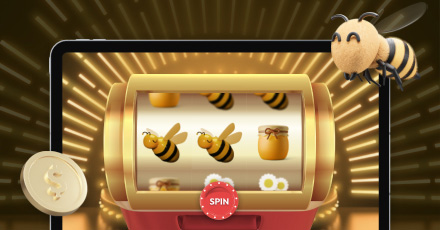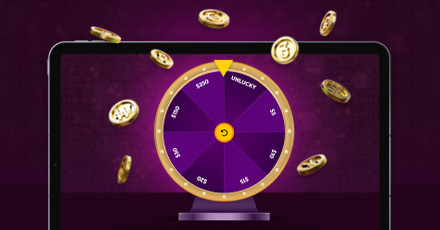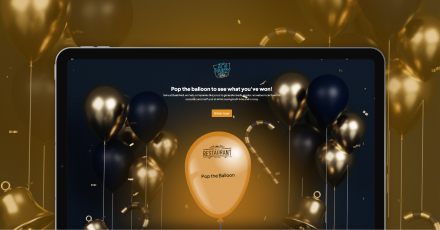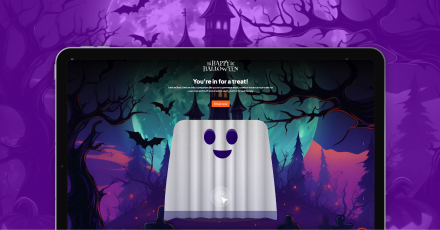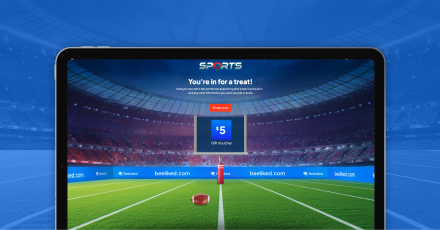Gamification is an approach that’s being used more and more across many different industries. In this post, we’re going to look at how schools, training centers, universities, businesses, and various private institutions use gamification to increase learners’ motivation and engagement.
It has proved to be very useful not just in the classroom, but in the business environment for employee training, onboarding, and educating customers.
What Is Gamification in Education
A comprehensive guide to gamification should always start with a definition, so here it goes. Gamification is the integration of game elements and mechanics into a non-game context.
Games have some distinctive elements that play a key role in gamification, for example:
- Users: They can be customers, clients, employees, and students.
- Tasks/challenges: Users perform these and progress towards defined objectives.
- Points: These can be accumulated after executing tasks.
- Levels: Users can pass through these, depending on their points.
- Badges: These can be used to reward users for completing actions.
- Ranking: This is done according to users’ achievements.
Gamification helps to improve motivation and learning in both formal and informal conditions.
Gamification and Learning Motivation
The theory behind using gamification in educational settings is that people learn best when they’re having fun. In addition, having goals, targets, and achievements also encourage the learning process.
To illustrate the point, here are some interesting statistics:
- A study into the effect of challenge-based gamification on learning in 2020 found that students’ performance improved by 34.75%, compared to traditional teaching methods. The gamification approach was called Horses for Courses and consisted of a challenge-based game that included points, levels, challenges, and a leaderboard.
- A high percentage of American workers (61%) receive on-the-job training which incorporates elements of gamification. According to data, 83% of those workers feel motivated, compared with 61% of employees who receive regular training feel bored.
- A study into whether educational gamification improves students’ motivation found that 67.7% of participants reported that the gamified course was more motivating than a traditional course.
Why Is Gamification Important in Education?
- Higher engagement rates: Learners are more engaged in the learning process
- Better retention: Helps students/employees stick to a course
- Step-by-step improvement: Applying rewards at the end of each course/training, celebrating small wins
- Risk-free environment: The rewards and challenges of a gamified experience create a risk-free environment in which students can learn how to apply the knowledge or skills they’re gaining.
- Instant feedback and reinforcement: Game-like play shows progress instantly and quizzes show scores right away, so students don’t have to wait for results or evaluation
Gamification vs Game-Based Learning
Gamification, game-based learning, they sound much the same, right? It’s a common misconception that they are the same when in fact they’re quite different.
So, what is it that differentiates them?
The main difference between the two is in their integration and how they’re applied. With games-based learning, games are fully integrated into the educational content. In other words, courses or classes are turned into educational games.
With gamification, elements from games are used to incentive rewards or for encouraging progress. It gets students to want to do something with the help of badges, levels, experience points, games of chance, and leaderboards.
Gamification can also play an important role in commercial enterprises to help motivate employees. Areas, where it has proved successful, include onboarding, collaboration, and the elimination of errors.
Gamification is very easy to add to existing systems, making it fast to implement and augment any content you might already have.
Let’s compare that with games-based learning which is a type of active learning that takes place within a game framework. The core of this learning approach is learning through games, where games play a central role.
Games are used to enhance the learning experience. If you’ve ever played a Stock Market Trading game in high school or Oregon Trail, you’ll know what we mean. The games themselves enhance the learning experience.
Students are introduced to new concepts and skills and then get to practice and use them in a risk-free setting.
Games-based learning has also been used in corporate settings to teach employees new skills, but in both applications, it does have some drawbacks.
The downside of using games-based learning compared with gamification is that it requires instructors, faculty, and trainers. This makes it very time-consuming, intensive, and very tiring.
What Games Help With Learning?
Learning is a serious business but that doesn’t mean it can’t be fun. Games have been used for many years and are great for helping students better retain information and practice life skills in a fun learning environment. Here are some examples of learning from games:
- Draw Me: A study carried out in 2016 by the Department of Psychology at the University of Waterloo found that people recall twice as many drawn as written words. Drawing creates a more cohesive memory trace.
- Headbands: This is an interactive game where one player gives clues to help another guess what’s on the card strapped to their head. This classic game can be a great ice-breaker at the beginning of school, but also has other benefits. It can be used to review terms and roots with students, practice vocabulary words, and experience low-pressure competition.
- Kahoot: Kahoot is a Norwegian online game-based learning platform that can help increase student participation, foster social and emotional learning, motivate students to take risks, improve their attitude toward learning, boost morale, and much more.
- Jenga: Not only can Jenga help improve manual dexterity, balance, and hand-eye coordination, but it can also develop motor, problem-solving, and social skills.
Here are a few more examples of how games can help with learning:
- Monopoly for critical thinking and math
- Chess for strategic and critical thinking
- Scrabble for spelling
- Zingo for math
- Catan for strategy thinking
- Silly Sentences for sentence structure and grammar
- Sight Word Swat for reading
- Scrambled States for geography
BeeLiked also has a selection of games that can be used in a learning environment. For example:
Spin the wheel: One way of using this type of game is to integrate it into an eLearning course to challenge learners about a specific topic. The learner spins the wheel to determine a score value and get a question. If they get the question right they win the points. The more correct answers, the higher their score.
Grabber: The grabber game could work in the same way. Students get to grab an item that might have a question attached and they then have to guess the answer.
Pop the balloon: A teacher might choose to use a pop-the-balloon game for the first 5 students to complete a test.
Examples of Gamified Educational Incentives
Now it’s time to look at some real-life examples of gamification in action.
Duolingo
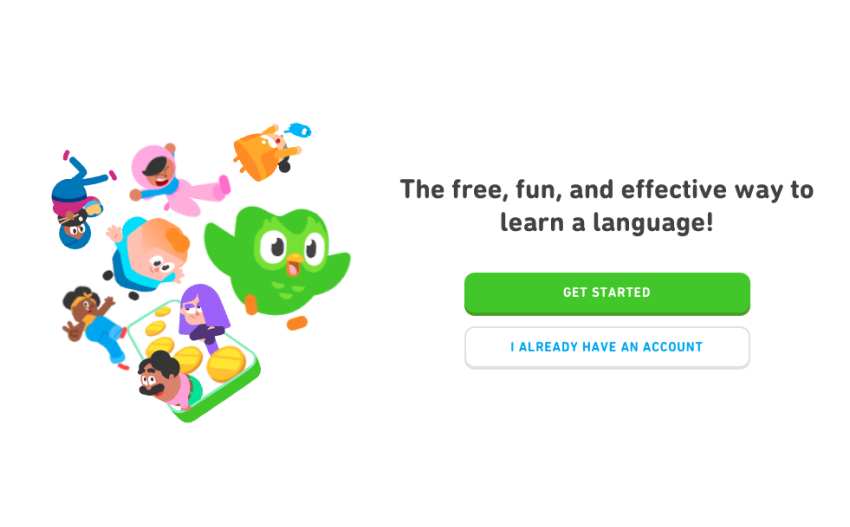
When it comes to educational apps and learning a language in particular, Duolingo is a world leader. The brand has managed to build an app that makes learning fun and it’s filled with some great examples of gamification.
A defining feature of the app is its badging system, however, it goes way beyond just that. Duolingo uses gamification to motivate the user and incentivize them to learn, review past material, test their knowledge and memory, test their speed of recall, and create and maintain regular learning habits.
Here are some examples of how Duolingo uses gamification:
- Rewards: Users receive rewards when they complete lessons and practice regularly. They can also earn streaks when they consistently study. Rewards gamify the process of language learning by giving tangible rewards for effort and motivating users to study regularly.
- Competition: Users can compete with friends and other learners on leaderboards. They’re given a ranking depending on their progress and performance. This is all about there being a social element to learning and fostering friendly competition.
- Badges and virtual rewards: When users reach certain milestones, complete certain tasks, or achieve learning outcomes they receive badges and other virtual rewards. These give users a sense of accomplishment and it also motivates them to continue their learning journey.
- Immersive stories: Duolingo also offers users the opportunity to learn through interactive and engaging narratives. This gamification of the learning process makes it enjoyable and more interesting for users.
Kahoot!
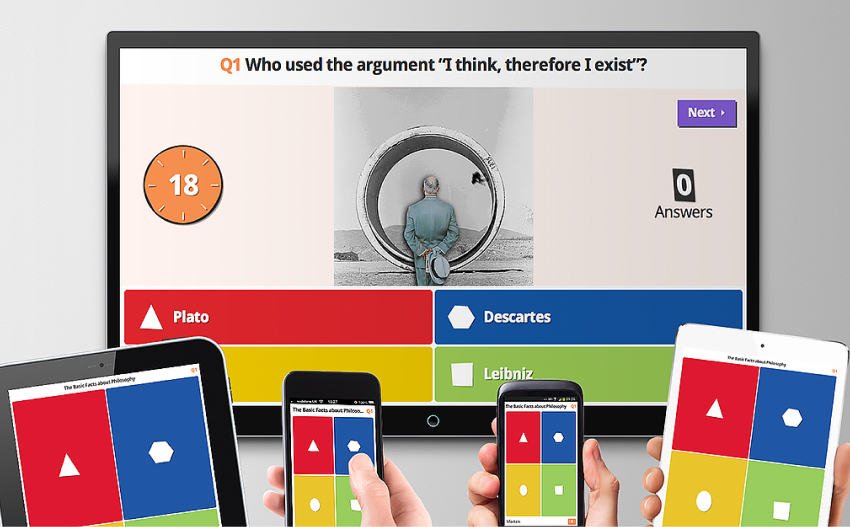
Kahoot is a game-based learning platform that teachers can use to create learning games for their students. Using Kahoot! They can create and display questions on the screen. Students then get to answer them using their computer, tablet, or smartphone.
It is one of the most popular game-based learning platforms, with 70 million monthly active unique users and it’s used by 50% of US K-12 students.
Some of the best Kahoot features include:
- Ghost: Students can play against their own previous high scores, making a game out of improving performance.
- Analysis: Analytics of results can be used to see which students are struggling and with what.
- Copy: A wealth of quizzes created by other educators are available to use for free.
- Assessment: Students’ knowledge can be checked before teaching a subject.
- Use media: Videos from YouTube can be added for students to watch and answer questions on.
ReadAlong
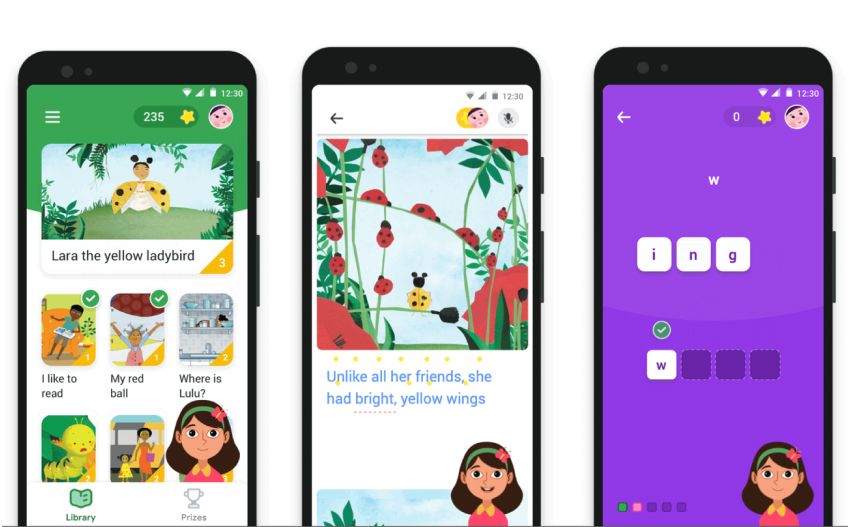
Google’s Read-Along app is a great example of gamification in education. It uses gamified features such as badges and points to help improve the reading experience for young learners. It’s a tool that can be used in both primary and secondary schools, and is particularly effective for motivating students to achieve literacy goals and improve their overall reading skills.
USHealth Connect
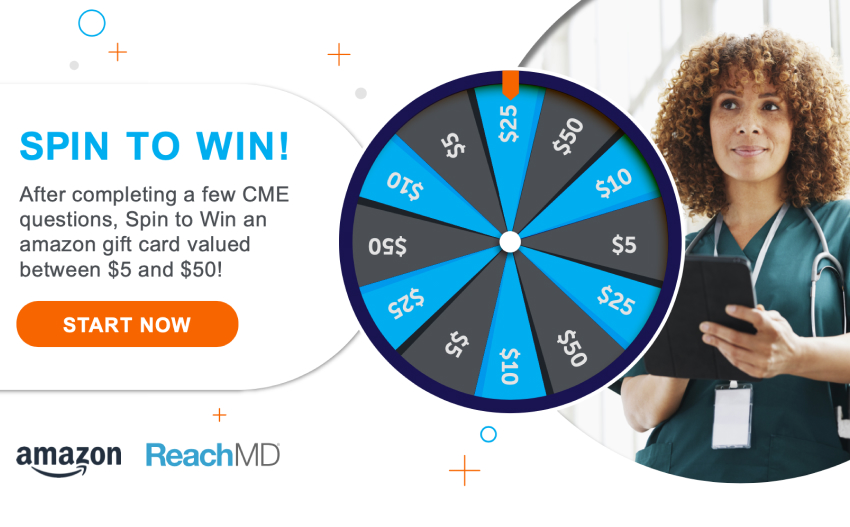
USHealth Connect is a global organization that provides education for healthcare professionals. ReachMD is a subsidiary of the organization and when it needed to increase the number of professionals taking tests and registering contact details, it approached BeeLiked for its help.
The US Health Promo that was developed was a good example of an education rewards platform.
Visitors to ReachMD’s EdTech website were invited to take a test after watching specialist talks. Before the user takes the test, they get to spin the wheel to see what Amazon gift card they’ve won. Prizes are gamified and every participant is guaranteed to win at least $5.
After winning a prize, participants then have to take the test and register their information before they’re sent their digital gift card.
The gamification promo led to an 18% increase in people taking tests and a 40% increase in opt-in data.
South African Airlines

BeeLiked created a gamified quiz for South African Airlines (SAA). The Walk to Freedom Quiz was created to celebrate the launch of the Walk to Freedom movie about the life of Nelson Mandela.
SAA wanted to create a test that tested people’s knowledge of Mandela’s incredible story. More than 222k people took the quiz and answered all 10 questions. It also achieved an impressive social reach of over 460k.
How to Gamify a Learning Experience
There are many ways you can take advantage of gamification to increase learner motivation levels, improve knowledge retention, and better learner engagement. Here are some examples:
- Rewarding positive behaviors with learning badges and trophies: Badges and trophies are a great way to acknowledge and reward people for their efforts. Badges can be given as a virtual object or a pinned image that can be put on their profile. It’s a fantastic way to show how much a person’s hard work and effort is valued.
- Measure levels of progress with point systems: It’s possible to encourage individuals to work harder by assigning points for completing different tasks. It also provides an accurate representation of a person’s level of effort and how much they’ve progressed throughout a lesson or the course.
- Friendly competitions and leaderboards: These are great for creating competition among students. Who wouldn’t want to see their name on top and work harder as a result?
- Challenges: These are tasks that require an individual to complete something using their time and effort. There is no negative impact should they fail or it’s done incorrectly. Various learning strategies can be incorporated into the challenge, such as problem-solving.
- Games of chance: Games of chance can be used to decide on specific rewards related to a task. They can also be used to offer bonuses, ‘ easter eggs’, and other benefits when users achieve a goal.
The Pros of an Education Gamification Platform
The benefits of gamification in education include several improvements in the learning process. The specific benefits include:
Enhances Interest and Motivation
When traditional education methods are used it’s often a struggle to keep students engaged and motivated. Gamification introduces an element of fun and interactivity into the learning process. Ultimately, this makes educational experiences more enjoyable for the students.
Incorporating game mechanics such as leaderboards, rewards, and challenges taps into our natural desire for competition, recognition, and achievement. This fuels students’ motivation to actively participate in their own learning journey.
Gamification provides dynamic and exciting learning environments for students that help to keep them consistently engaged and eager for more.
Creates Enthusiasm
Gamification makes the learning experience an additive one, thereby creating enthusiasm among students. The rewards, leaderboards, and friendly competition trigger a release of dopamine, making learning more enjoyable.
When students are enthusiastic it pushes them to learn more, helping them master new chapters, skills, and topics.
Improves Problem-Solving Skills and Information Retention
One very important benefit of gamification is that it enhances information retention. When students are immersed in interactive scenarios, problem-solving challenges, and virtual simulations, they acquire knowledge in a more practical and memorable way.
Gamification involves an element of trial and error that helps students learn to analyze situations, think critically, and make decisions. All of this develops their problem-solving skills.
The learning games tend to be very repetitive in nature which helps to reinforce learning by providing opportunities for practice and reinforcement. The result is improvements in long-term retention of skills and knowledge.
Personalized Learning Experience
Every student is different in their pace and style of learning. This is the main reason why traditional classroom settings fail. They’re unable to cater to individual needs effectively.
A gamified classroom, on the other hand, offers a personalized learning experience because it can be adapted to the preferences and progress of individual students. Students are able to choose their own learning path, explore topics that interest them, and learn at their own pace.
Provides Instant Feedback
When students take more traditional tests they have to wait for their marks and to find out what they did wrong or what the right answer was.
In comparison, gamification provides instant feedback and helps students learn from their mistakes.
Gamifiying the learning experience means they instantly know what they’ve done wrong. The system can also provide the correct answer so students can improve instantly.
Makes Connections
Gamification in education makes learning fun and helps connect students to real-world issues. It also provides a risk-free environment where students can apply the knowledge they’ve gained. Such a connection helps students better understand how to apply their knowledge in real life.
Improves Productivity
Gamified learning can raise students’ interest in the subject matter. The creation of interactive, engaging gamified content using game design principles is the best way to raise interest.
When students earn a point or reward through gamified learning, they get a dopamine release. Students also have a clear, well-defined goal which motivates them to succeed and makes them more productive.
Allows Regular Updates
It’s not just students that benefit from gamification. Teachers can get regular updates on how students are progressing or which topics they might be struggling with. Gamified learning allows for a personalized profile of individual students and the teacher can access it at any time.
In addition, parents can access any updates and help students with subjects or topics they’re struggling with.
Gamified education holds immense potential to revolutionize education by making learning fun, interactive, and effective. If you’d like to try it for size, try BeeLiked, the education gamification platform created for learners!


